
Raymond McDaid at Legnaduff Farm and (inset) with the 200-year-old mill wheel he has restored. Photos: Joe Boland (North West Newspix)
A 200-year-old mill wheel on the outskirts of Killea turned for the first time in around 80 years last weekend.
The mill wheel, located at Legnaduff Farm on the Donegal-Derry border has been painstakingly restored over the last five years by local businessman Raymond McDaid.
The wheel was ‘a total mess’, overgrown and sitting in six feet of clay when McDaid bought the farm in 2017.
McDaid began a project to restore the wheel to its former glory as well as touching up what was an ageing and decrepit complex that is steeped in history.
The transformation has been drastic.
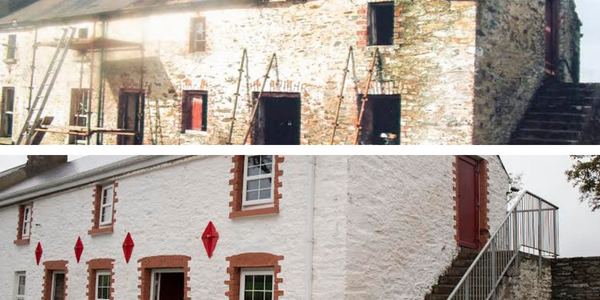
Then and now . . the buildings have been transformed
An inscription on one of the walls of a building bears the initials ‘WR’ and the year 1786. The lettering is believed to refer to a William Russell, who was then based on what became a thriving farmyard that was central to the local industry of the coming generations.
Last Saturday, around 70 people gathered to see the mill wheel turn. McDaid’s excitement pitched to levels he perhaps last experienced when he was the successful manager of the local Kildrum Tigers, who he guided to three Ulster Senior League titles in 2004, 2007 and 2008.
With the aid of a local farmer’s tanker, McDaid and his onlookers watched in awe. They could have been in another time when the threshing mill, corn mill, a dairy house and a stable were in full functioning order at Legnaduff Farm.
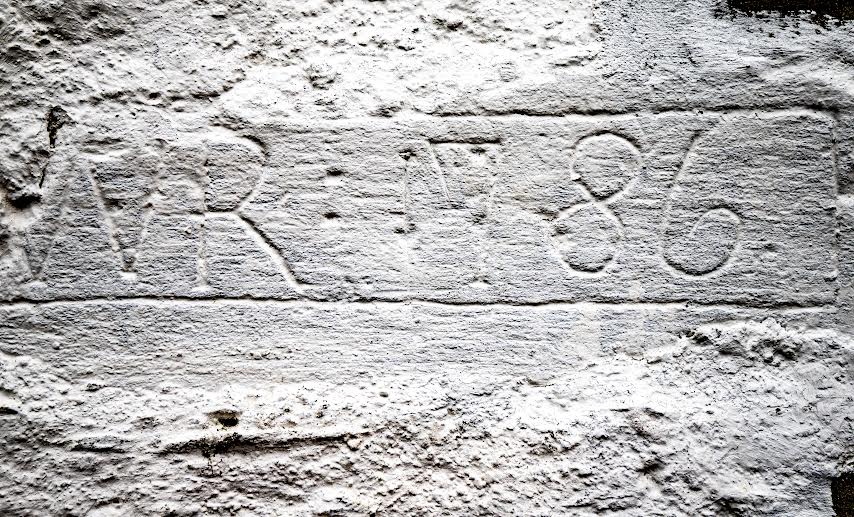
“The way it is, you can put water into it and we’ll get it going for a show now at some stage,” McDaid says.
The enthusiasm with which he explains the project is a replica of the patience he had in restoring the wheel. Having, literally, got to the bottom of it by removing the mounds of clay part of it was buried in, he began the onerous task of re-patching the wheel, replacing the bearings and carefully inserting 48 new needles. A delicate and time-consuming task, it was completed without plans, drawings. The original shaft runs through the centre of the wheel.
By head, eye and hand, history was brought back to the present.
“It’s well tidied now,” McDaid says. “It was a total mess when I bought the place. We had a man in with the tanker and had the wheel turning for two hours. We had a wee test on Friday and got going on Saturday. I couldn’t believe the crowd of people who came out.
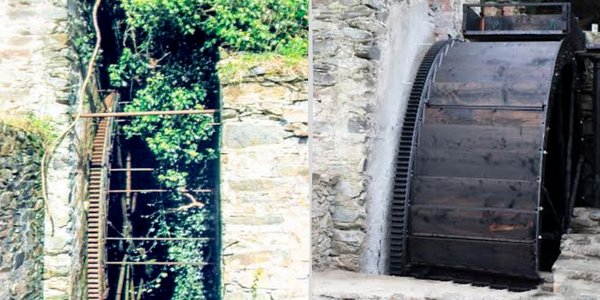
The overgrown mill wheel (left) has been restored to working order (right)
“This wheel ran the whole place here. It ran the flax house, the corn house, the flour house. At one time, this place was heaving with different things being produced. It was last going probably in the early part of the 1900s.”
The assistance of Colm Murphy, Noel McDermott and Bertie McElhinney was key at various stages for McDaid, but it was his own persistence that brought the plan to life.
Local resident Ronald Cole, who is in his 90s, believes the wheel wasn’t long in operation after the Second World War. “It is great to see it going again,” he said. “I remember the flax just disappeared after the last war. There was nothing then.
“There was a threshing mill going here for a long time. I remember Joe O’Donnell, Jimmy Killen and Johnny Killen - he was the finisher - working here. I remember them going out to the bridge for a smoke. You couldn’t smoke in the flax mill, of course.”
The complex itself, which straddles both sides of a narrow country road, is around 300 years old and is a reminder of what was a thriving industry in the 19th century.
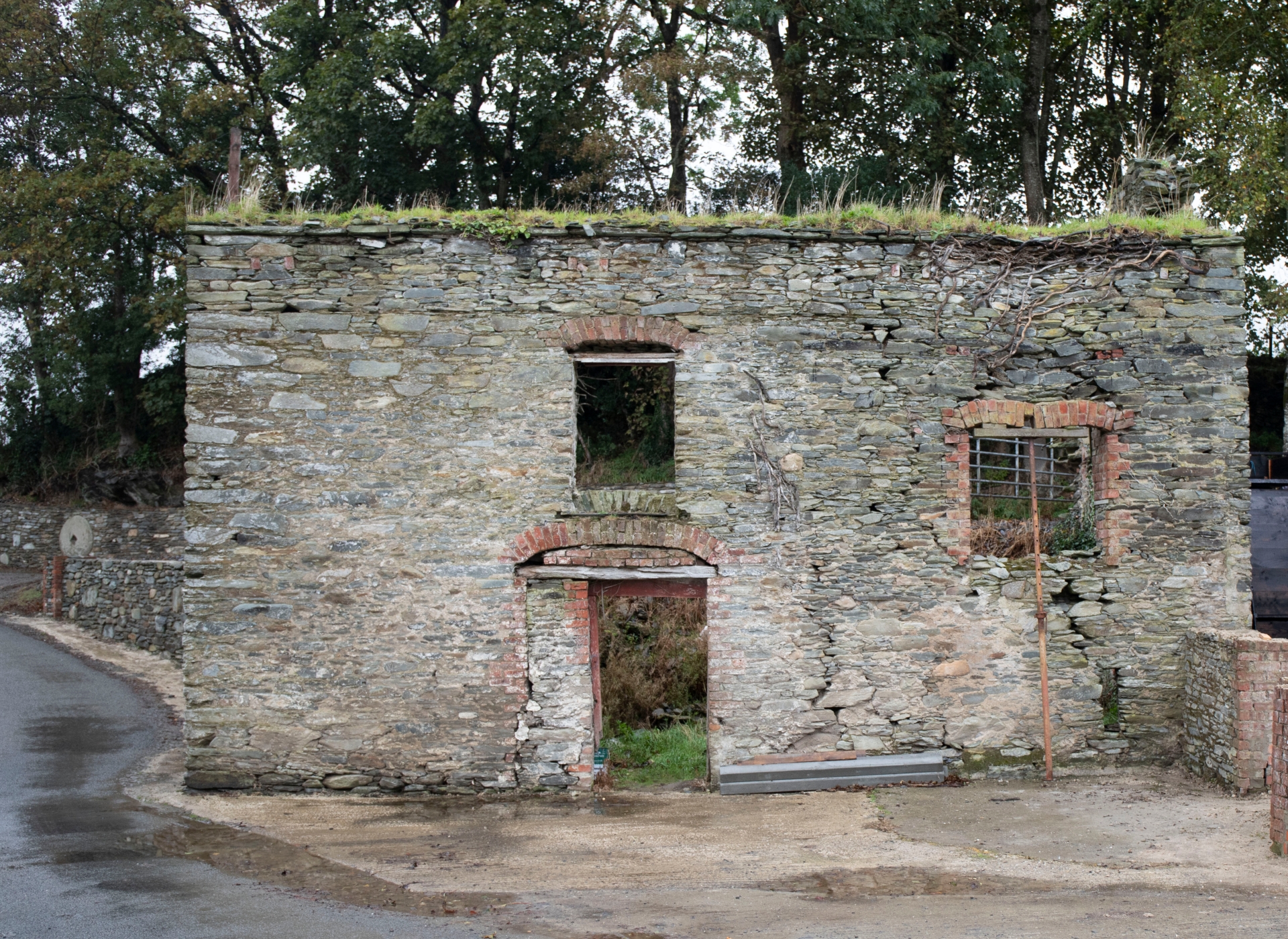
The mill was powered by a burn which runs alongside the complex and which runs into the Foyle.
In 1846, the British Government provided a grant for the wheel. The adjacent mill house, McDaid is now in the process of refurbishing, while a water well on a corner of the complex has been newly stoned and a modern feel added to what is another nugget of splendour.
Legnaduff Farm was the scene of a tragedy 165 years ago.
In January 1857, a woman called Jane Finlay died a horrific death.
On January 13, 1857, Dr Long, a local coroner, visited Legnaduff to perform an examination of the body of Ms Finlay.
The previous day, reported the Sentinel, Ms Finlay came to her death in the flax mill,
“On the evidence it appeared that the arm of the deceased had been caught by the gearing at the end of the rollers for breaking the flax, which was instantly torn from her body and crushed to atoms,” a report said.
“The chest was also shockingly mutilated.”
Her death was instantaneous and a verdict of accidental death was returned by the coroner.
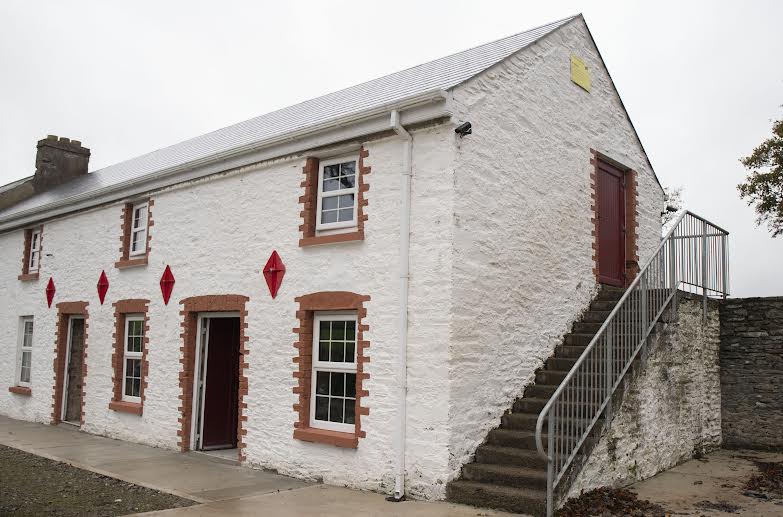
Just a few yards away from the mill wheel at Legnaduff, a stone structure at the roadside draws attention.
Fresh stones around the strangely-shaped, yet carefully laid out, monument, are noteworthy.
They are believed to mark an ancient burial chamber. Those with interest and knowledge of the area believe it could be up to 5,000 years old.
What would have been the ‘entrance’ remains visible. Bodies at the time were placed inside with a candle and a simple stone rolled over the opening.
Subscribe or register today to discover more from DonegalLive.ie
Buy the e-paper of the Donegal Democrat, Donegal People's Press, Donegal Post and Inish Times here for instant access to Donegal's premier news titles.
Keep up with the latest news from Donegal with our daily newsletter featuring the most important stories of the day delivered to your inbox every evening at 5pm.